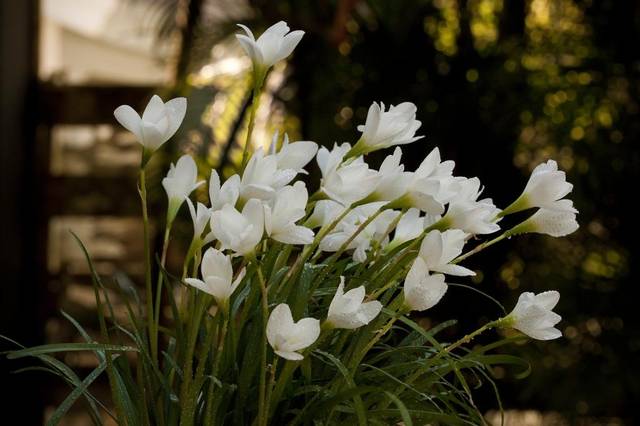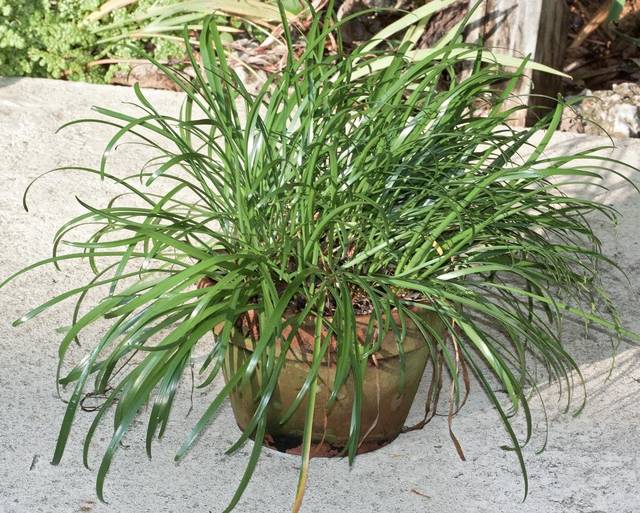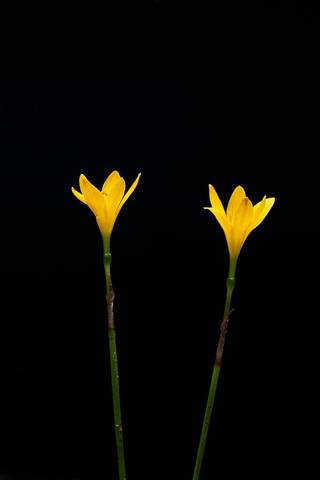The prolific, terrific rain lily

BY KENNETH SETZER
As published in the Miami Herald, 11/12/15.
Gardeners often call a plant a volunteer if it shows up on its own in the garden. More often than not, it’s an unwanted weed. But sometimes it’s a gem.

Rain lily flowers—all from a single volunteer plant
Among the many little tufts of grass and Pilea plants popping up in my pots, a few years back one volunteer plant in particular caught my eye. It looked like mondo grass, dark green and thick, with strap-like leaves. After some time passed, and a good amount of rain, the grass-like plant grew taller and denser, and then at long last it flowered — a rain lily. What a beauty it was!

Bulbs of Simpson’s zephyr lily can be teased apart.
Yellow rain lily, a well-behaved exotic Kenneth Setzer Fairchild Tropical Botanic Garden
Delicate white with a subtle hint of pink along the petal margins, the trumpet-shaped flower certainly resembles a small lily. Its common name, rain lily, reflects this, though you may also see it called Atamasco lily.
And naturally, there are loads of species and varieties of rain lily. I believe my volunteer to be Simpson’s zephyr lily (Zephyranthes simpsonii) the linen-white flowers of which, when set against the dark green foliage, is so reminiscent of Tiffany glass lampshades — I’m not sure why; maybe it’s the impossible, delicate beauty of it all. Zephyranthes citrina flowers in an intense, bright yellow, while Z. rosea, the rosy rain lily, produces — you guessed it — intensely pink flowers.
These are all part of the Amaryllidaceae family, a mouthful indeed, but amaryllis family will do. As such, they grow from onion-like bulbs, which are toxic if consumed. Two other similar plant genera in the family include Cooperia and Habranthus, both also called rain lilies.

Time for these rain lilies to be transplanted.
I set out to cultivate and nurture my volunteer rain lily. I excavated the bulb and its roots from the cactus pot where it somehow began its life, transplanting it into a wide and fairly shallow pot of its own in a mixture of compost and perlite. The underground bulb soon produced offshoots, called bulblets, eventually filling the pot.
During drier parts of the year, the bulbs can go dormant, or the plant may simply not flower. Given lots of sun, especially a morning exposure, and some rain, and the fireworks will begin. I could barely believe the sight of dozens of flowers clustered into the single pot. It was stunning.
Flowers will fade in a day or two, but new ones may appear soon afterwards. If they go to seed, collect the seeds and plant them soon, just under the soil. My volunteer has not produced seeds, but instead has produced dozens of bulblets.
Once a pot becomes crowded with the grassy stems, remove the contents and any excess soil. You will need to hold the clump and reach under it with your thumbs to pry the bulbs and bulblets apart. Replant them in clumps of 3 or more, as smaller groups may take longer to mature and flower.

Yellow rain lily, a well-behaved exotic
Besides low salt tolerance, not much plagues rain lilies. My volunteer has asked for nothing in return besides occasional watering and a home. If it is indeed Simpson's zephyr lily, the USDA lists it as threatened in Florida. It isn’t every day a threatened native pops up in my backyard. Even if you don’t find a volunteer of your own, consider buying some rain lily bulbs for a low-maintenance addition to your garden. One morning, you may step outside to their glorious flower show.
